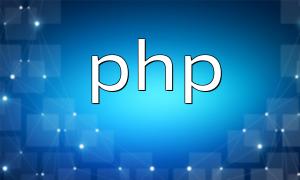In web development, the speed of image processing directly affects user experience. As users increasingly expect faster page loading times, optimizing image processing has become essential. This article shares several methods to accelerate image handling using PHP functions, along with practical examples.
The GD library is the standard PHP library for image manipulation, offering a wide range of functions. The following example shows how to resize an image using the GD library:
$imgPath = 'path/to/image.jpg';
$newWidth = 800;
$newHeight = 600;
// Create a new image resource
$newImage = imagecreatetruecolor($newWidth, $newHeight);
// Copy and resize from the original image
$sourceImage = imagecreatefromjpeg($imgPath);
imagecopyresampled($newImage, $sourceImage, 0, 0, 0, 0, $newWidth, $newHeight, imagesx($sourceImage), imagesy($sourceImage));
// Save the new image
imagejpeg($newImage, 'path/to/newimage.jpg');
// Free resources
imagedestroy($newImage);
imagedestroy($sourceImage);This code creates a new image resource with imagecreatetruecolor, resizes the original image with imagecopyresampled, and saves it using imagejpeg.
For pages with many images, reprocessing each image on every visit is inefficient. Using caching can avoid repeated processing and improve speed:
$imgPath = 'path/to/image.jpg';
// Check if cache exists
$cacheFile = 'path/to/cachedimage.jpg';
if (file_exists($cacheFile)) {
header('Content-Type: image/jpeg');
readfile($cacheFile);
exit;
}
// If cache doesn't exist, process and save new image
$newWidth = 800;
$newHeight = 600;
$newImage = imagecreatetruecolor($newWidth, $newHeight);
$sourceImage = imagecreatefromjpeg($imgPath);
imagecopyresampled($newImage, $sourceImage, 0, 0, 0, 0, $newWidth, $newHeight, imagesx($sourceImage), imagesy($sourceImage));
imagejpeg($newImage, $cacheFile);
// Output the new image
header('Content-Type: image/jpeg');
readfile($cacheFile);
// Free resources
imagedestroy($newImage);
imagedestroy($sourceImage);This approach checks for an existing cached image first. If it exists, it outputs the cached image; otherwise, it generates a new image and saves it for future requests, significantly improving efficiency.
When a page contains multiple images, parallel processing allows simultaneous handling, reducing total processing time:
$images = ['path/to/image1.jpg', 'path/to/image2.jpg', 'path/to/image3.jpg'];
// Number of concurrent processes
$processCount = 4;
// Create child processes
$processes = [];
for ($i = 0; $i < $processCount; $i++) {
$processes[$i] = new swoole_process(function($worker) use ($images, $i, $processCount) {
for ($j = $i; $j < count($images); $j += $processCount) {
// Process the image
// ...
}
$worker->exit();
});
$processes[$i]->start();
}
// Wait for child processes to complete
foreach ($processes as $process) {
swoole_process::wait();
}This example uses the Swoole extension to create child processes that execute image processing tasks concurrently. By setting the number of concurrent processes, multiple images can be processed simultaneously, reducing overall time.
By using the GD library, implementing caching mechanisms, and leveraging parallel processing, PHP image handling speed can be significantly improved. Choosing the appropriate method based on specific requirements helps enhance page loading speed and improves user experience.





